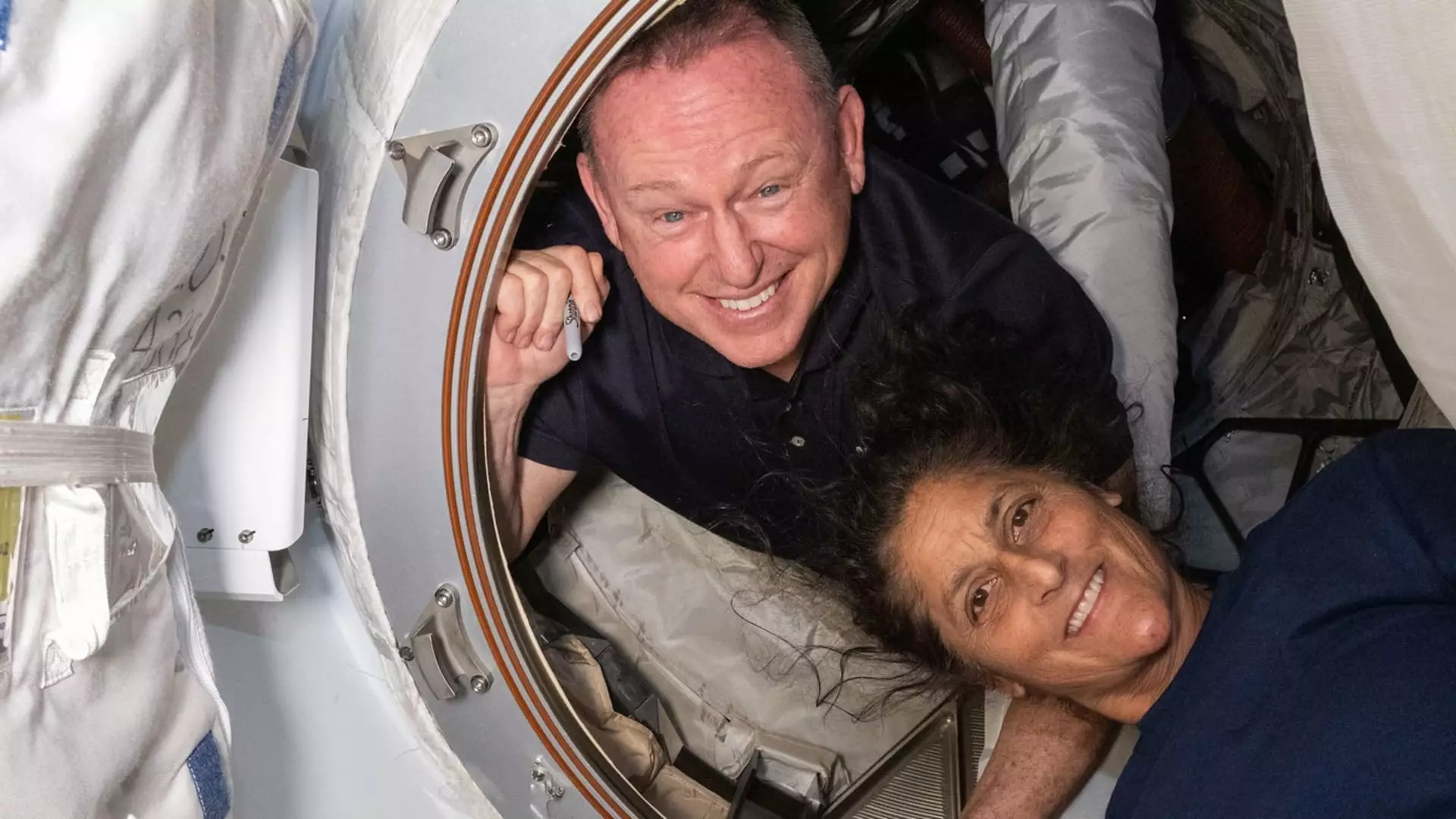The saga of two U.S. astronauts, Butch Wilmore and Suni Williams, returning from a nine-month stint aboard the International Space Station (ISS) is less a triumph of modern engineering and more a poignant narrative of resilience amidst adversity. Finally journeying back to Earth aboard a SpaceX Dragon after an unexpected detour with Boeing’s Starliner, their experience lays bare the intricate dance between innovation, oversight, and political undercurrents that can complicate even the most advanced space missions.
Originally intended to be a brief nine-day test flight, their mission turned into an unplanned odyssey marked by a series of troubling technical failures. The Boeing Starliner’s thrusters—crucial for a safe docking—malfunctioned, forcing NASA to send the capsule back without its intended astronauts. This situation not only underscores the precarious nature of space travel but also calls to question the efficacy of corporate partnerships in high-stakes environments. How can we rely on aerospace giants when their costly missteps can put lives at risk?
Boeing’s $2 Billion Gamble
Boeing’s struggles with the Starliner reflect a vulnerability in a system where one faltering link can lead to a cascade of problems. With losses exceeding $2 billion and the failure to demonstrate safe crew capabilities, one cannot help but scrutinize the efficacy of regulatory oversight and corporate accountability. The expectation was that Boeing would bolster NASA’s ambitions of having two competing entities—the aerospace titan and SpaceX—provide safe transport to the ISS. Instead, we find ourselves witnessing a disconcerting unraveling of confidence in a once-revered company.
What does this mean for future collaborations? The ongoing saga highlights the inherent risks of relying on a dual-provider approach, especially when one of the players finds themselves mired in controversy. Critics may argue that a monopoly might offer more consistent results, but at what cost to innovation and competition? It is a conundrum that beckons a deep dive into the advantages and pitfalls of privatizing NASA’s missions.
The Political Cloud Overhead
Fueling the narrative is the political backdrop that became particularly pronounced during the Trump administration. Accusations of “stranding” astronauts—fueled by a desire for quicker launches—can warp public perception and sow distrust in agencies that are supposed to inspire awe and wonder. President Trump’s remarks about the astronauts, although unproven, exemplify how space missions can become battlegrounds for political capital, muddying the waters between scientific achievement and partisan interests.
NASA, often lauded for its scientific prowess, found itself navigating through a maze of political pressures while attempting to maintain the integrity of its mission. This is a cautionary tale about the intersection of science and politics, emphasizing the need for open dialogues that keep the vital work of exploration free from the clutches of partisanship.
The Human Element: Resilience Amidst Chaos
While technical and political issues obscure the mission’s success, the astronauts’ resilience should not go unnoticed. Wilmore and Williams, seasoned veterans and former Navy test pilots, adapted to their protracted stay at the ISS. According to Williams, they did not feel abandoned; instead, they contributed to their environment as if their extended presence were a natural part of the rotating crew dynamics.
The ability to maintain a hopeful outlook despite unpredictable circumstances serves as an inspiration. Their commitment to conducting experiments and ground maintenance reflects an unyielding dedication to science, a quality that encapsulates the spirit of exploration. If anything, this period of unexpected challenges bolsters the case that human fortitude often eclipses technical frailty.
The Path Forward: Reflections on Innovation
As we hover on the edge of the next era of space exploration, a blend of caution and curiosity must guide future missions. NASA’s adjustments to accommodate Wilmore and Williams, involving a postponement of the Crew-10 launch, point to a bureaucratic flexibility that is both commendable and necessary. It exemplifies how the agency, caught in a web of corporate missteps and political posturing, still manages to prioritize the safety and well-being of its astronauts.
This unfolding drama invites questions for the future: How will partnerships evolve to ensure accountability? Will the pursuit of innovation outweigh the risks inherent in navigating untested technologies? And can we successfully prevent the politics of space exploration from overshadowing its scientific goals? The answers remain elusive, but one thing is clear — the journey back home is as intricate as the voyage that took them there.

